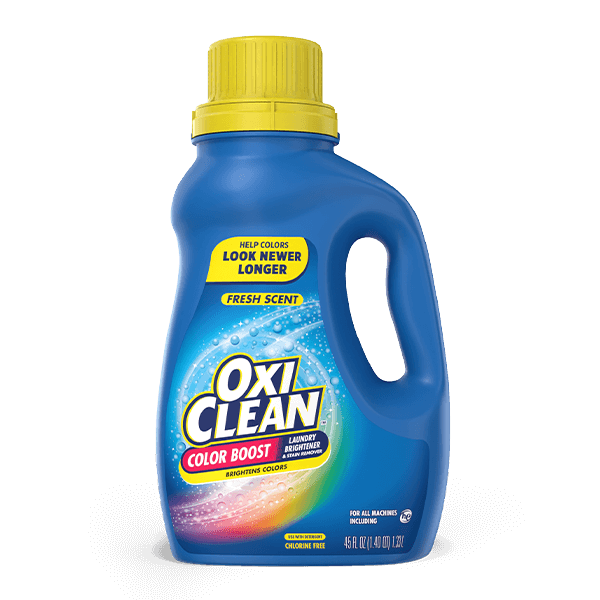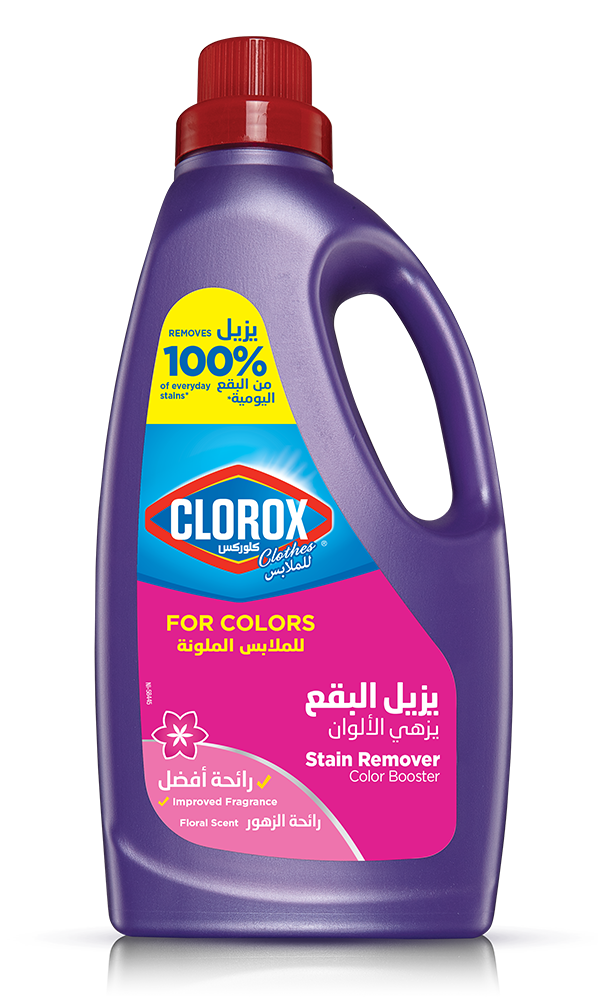Stains on colored clothes can be frustrating. Using the wrong stain remover can ruin your favorite shirt or dress.
Understanding how to use stain removers safely is essential. Many people worry about damaging their colored clothes when treating stains. You want your clothes to look good, but you also want to remove those pesky marks. The right stain remover can help you achieve both.
This guide will show you how to choose and use stain removers without harming the fabric or color. We will cover helpful tips and techniques that make the process easier. Learn how to protect your clothes while keeping them clean and fresh. Let’s dive into the best methods for using stain removers safely on colored clothing.
Table of Contents
The Colorfastness Test
Using a stain remover on colored clothes can be tricky. The wrong product can cause fading or discoloration. The Colorfastness Test helps you check if a fabric can handle stain removers. It ensures your clothes stay vibrant and undamaged.
Choosing The Right Spot
Start by picking a hidden area on the garment. This spot should be inconspicuous. Follow these steps:
- Find a seam or inside hem.
- Use a cotton swab or a small cloth.
- Dab a little stain remover on the spot.
Make sure the chosen area is small. This way, any damage won’t be noticeable. Wait for about five minutes. Check for color change or fading.
Interpreting Test Results
After waiting, look closely at the test area. Here’s how to read the results:
| Result | Action |
|---|---|
| No color change | Safe to use the stain remover. |
| Fading or discoloration | Do not use the stain remover. |
| Spot is the same | Proceed with caution. |
Always test before treating the entire garment. Protect your favorite clothes from damage.
Types Of Stain Removers
Choosing the right stain remover is key for colored clothes. Different types work better on different stains. Understanding these types helps you select the safest option for your laundry.
Chemical Solvents
Chemical solvents are strong products. They are effective on tough stains. However, they can damage colored fabrics if not used properly. Here are some common types:
- Chlorine bleach: Brightens whites but can fade colors.
- Oxygen bleach: Safer for colors. It removes stains without fading.
- Acetone: Often used for nail polish. It can damage fabric.
Always follow the instructions on the label. Test any chemical solvent on a small, hidden area first. This prevents any unwanted damage.
Natural Alternatives
Natural alternatives are safer for colored clothes. They are less harsh and often easier to find. Here are some effective options:
- Baking soda: Great for fresh stains. Mix it with water to form a paste.
- White vinegar: Works well for odors and stains. Dilute it with water before use.
- Lemon juice: Acts as a natural bleach. Use it carefully on bright colors.
These natural options are gentle. They clean without risking color damage. Experiment to find what works best for your stains.
Pre-treating Stains Effectively
Stains on colored clothes can be tricky. Pre-treating them properly can save your favorite outfits. Using the right technique helps remove stains without fading colors. Let’s explore how to do this safely.
Application Techniques
Applying stain remover correctly is crucial. Here are some effective techniques:
- Choose the Right Product: Use a stain remover made for colored fabrics.
- Test First: Always test the product on a hidden area of the fabric.
- Apply Gently: Use a soft cloth or sponge to apply the remover.
- Work from the Outside: Start at the edge of the stain and work inward.
These steps help prevent spreading and ensure the stain is targeted.
Timing Is Key
Timing plays a big role in stain removal success. Follow these tips:
- Act Quickly: Treat stains as soon as possible for best results.
- Let it Sit: Allow the stain remover to sit for 5 to 10 minutes.
- Don’t Let it Dry: Do not let the remover dry on the fabric. This can set the stain.
Paying attention to timing helps keep colors bright. It makes stain removal more effective.
Stain Identification Tips
Identifying stains correctly is crucial. Different stains require different treatments. Knowing what type of stain you have can help you choose the right remover. Here are some tips to help you identify stains effectively.
Categorizing Stains
Stains can be grouped into different categories. Here are the main types:
- Food Stains: Examples include ketchup, coffee, and grease.
- Drink Stains: Examples include wine, juice, and soda.
- Ink Stains: Common in pens and markers.
- Blood Stains: Often found on clothing after cuts or scrapes.
- Grease Stains: Found on clothes after cooking.
Look closely at the stain. The color, texture, and source help in categorization. Knowing this will make it easier to treat the stain.
Matching Stains With Removers
Different stains need specific removers. Here’s a simple guide to match stains with the right products:
| Stain Type | Recommended Remover |
|---|---|
| Food Stains | Enzyme-based stain remover |
| Drink Stains | Oxygen bleach |
| Ink Stains | Rubbing alcohol |
| Blood Stains | Cold water and soap |
| Grease Stains | Dish soap or degreaser |
Always read the product labels. Follow the instructions carefully. Testing on a small area helps prevent damage.
Dos And Don’ts Of Stain Removal
Stain removal can be tricky, especially for colored clothes. Knowing what to do and what to avoid helps protect your garments. Follow these tips for safe and effective stain removal.
Common Mistakes
- Ignoring fabric care labels: Always check the label first.
- Using hot water: Hot water can set stains on colored fabrics.
- Applying too much stain remover: Less is often more when treating stains.
- Not testing first: Always test your stain remover on a small, hidden area.
Best Practices
- Act quickly: Treat stains as soon as possible.
- Blot, don’t rub: Blot the stain gently with a clean cloth.
- Use cold water: Rinse stained areas with cold water.
- Choose the right product: Use a stain remover made for colored clothes.
Here’s a quick reference table:
| Dos | Don’ts |
|---|---|
| Check fabric labels | Use bleach on colored fabrics |
| Act quickly on stains | Use hot water for rinsing |
| Blot stains gently | Ignore stain removal instructions |
| Test stain remover first | Apply too much product |
Dilution And Mixture Ratios
Using a stain remover can be tricky. The right dilution and mixture ratios are essential. Too strong can damage colored clothes. Too weak won’t remove stains. Understanding how to mix your stain remover is key.
Creating The Perfect Mix
Follow these simple steps to create the right mixture:
- Read the label on your stain remover. Check for specific instructions.
- Choose a clean container. Make sure it’s dry and free from residue.
- Measure the stain remover. Use a measuring cup for accuracy.
- Add water. The typical ratio is usually 1:3 (stain remover to water).
- Mix gently. Stir the solution without creating bubbles.
Always test the mixture on a small, hidden area of the fabric first. This helps avoid damage.
Adjusting For Fabric Types
Different fabrics require different approaches. Here’s a quick guide:
| Fabric Type | Recommended Ratio | Notes |
|---|---|---|
| Cotton | 1:3 | Safe for most colors. |
| Polyester | 1:4 | Use less stain remover for safety. |
| Wool | 1:5 | Very gentle mix needed. |
| Silk | 1:6 | Test on hidden area first. |
Adjust the ratios based on the fabric. Always prioritize safety to keep your clothes looking great.
Application Tools And Gadgets
Choosing the right tools and gadgets makes stain removal easier. Using the correct equipment helps protect your colored clothes. Here are some essential tools for safe stain removal.
Brushes And Pads
Brushes and pads are great for applying stain removers. They help lift stains without damaging fabric. Here are some popular options:
- Soft-bristled Brush: Gentle on fabric, effective on stains.
- Stain Removal Pads: Good for scrubbing without harm.
- Toothbrush: A clean, old toothbrush works well for tough spots.
Always use a light touch. Rubbing too hard can damage the fabric. Test your tool on a hidden area first.
Diy Tools At Home
You can find useful tools around your home. Here are some DIY options:
- Old T-shirts: Cut them into small pieces for dabbing.
- Sponges: Use soft sponges to apply removers gently.
- Paper Towels: Great for soaking up excess stain remover.
These tools are effective and cost-free. They can help treat stains safely. Remember to always act quickly on stains. The sooner you treat them, the better the results.
Temperature’s Role In Stain Removal
Temperature plays a crucial role in removing stains from colored clothes. The right water temperature can enhance the effectiveness of your stain remover. Using hot, warm, or cold water affects how well stains lift from fabric. Here’s how to choose the right temperature for your colored clothes.
Hot Vs. Cold Water
Hot water works well for certain stains. It helps dissolve oils and grease. However, hot water can also fade colors. Use hot water with caution. Cold water is safer for colored fabrics. It helps prevent colors from bleeding. Cold water is best for:
- Protein stains (like blood or sweat)
- Colorful fabrics
- Delicate materials
Consider this table for a quick overview:
| Water Temperature | Best For | Risks |
|---|---|---|
| Hot Water | Grease, oil, tough stains | Fades colors, shrinks fabrics |
| Cold Water | Protein stains, delicate fabrics | Less effective on tough stains |
When To Use Warm Water
Warm water is a middle ground. It works well for general stains. Use warm water when:
- The fabric is sturdy and colorfast.
- Stains are not too tough.
- You want to balance between hot and cold.
Warm water can help remove:
- Food stains
- Some dirt
- Light oil stains
Always check the care label. It guides you on the safest water temperature. By choosing the right temperature, you protect your colored clothes while effectively removing stains.
The Role Of Agitation
Agitation is key in using a stain remover for colored clothes. It helps to lift stains effectively. You can achieve agitation through hand washing or using a washing machine. Understanding these methods ensures safe and effective stain removal.
Hand Washing Techniques
Hand washing allows for gentle agitation. Follow these steps:
- Fill a basin with cool water.
- Add a small amount of stain remover.
- Gently submerge the stained area.
- Use your fingers to rub the fabric lightly.
- Let it soak for 5-10 minutes.
- Rinse thoroughly with cool water.
Key tips:
- Always test the stain remover on a hidden area first.
- Avoid scrubbing too hard to prevent damage.
- Use cold water to maintain color integrity.
Using A Washing Machine
A washing machine provides consistent agitation. Follow these steps:
- Check the care label for washing instructions.
- Place clothes in the machine, separating colors.
- Add the appropriate amount of stain remover.
- Select a gentle cycle setting.
- Start the wash.
Important points:
- Use cold water for colored fabrics.
- Do not overload the machine.
- Keep an eye on the wash time.
Rinsing And Post-treatment Care
After using a stain remover on colored clothes, proper rinsing and care are vital. This step ensures that all chemicals are washed away. It also helps to protect the color of your fabric. Follow these steps for effective rinsing and care.
Thorough Rinsing
Rinsing removes leftover stain remover. It prevents damage to your clothes. Here are the steps:
- Run cold water over the stained area.
- Use your hands to gently rub the fabric.
- Continue rinsing until the water runs clear.
Thorough rinsing helps maintain the color. It also keeps the fabric from feeling stiff.
Post-rinse Treatment
After rinsing, treat your clothes to keep them looking fresh.
- Check for any remaining stains. If needed, repeat the stain removal process.
- Air dry the clothes instead of using a dryer. This helps prevent fading.
- Store your clothes away from direct sunlight.
Using a gentle detergent can also help. This will keep your colors vibrant. Here’s a simple table for reference:
| Post-Rinse Care | Action |
|---|---|
| Check for stains | Repeat stain removal if needed |
| Drying | Air dry to avoid fading |
| Storage | Keep away from sunlight |
Taking care of your colored clothes after stain removal is essential. Follow these steps for best results.
Drying Techniques For Colored Clothes
Drying colored clothes properly is essential. The right technique helps maintain their vibrant colors. Follow these methods to keep your clothes looking fresh.
Air-drying
Air-drying is a safe method for colored clothes. It prevents fading and shrinking. Here are steps to air-dry your clothes:
- Wash clothes gently. Use cold water and mild detergent.
- Remove excess water. Gently squeeze the clothes. Avoid wringing them.
- Lay clothes flat on a clean surface. Use a towel to absorb moisture.
- Hang clothes on a drying rack. Ensure good air circulation.
- Avoid direct sunlight. This prevents color fading.
Consider these tips:
- Choose a shady spot for hanging.
- Use padded hangers for delicate items.
- Space out clothes to avoid dampness.
Machine-drying Tips
Using a dryer can be convenient. Follow these tips to protect your colored clothes:
| Tip | Description |
|---|---|
| Use low heat | Low heat helps prevent shrinking and fading. |
| Separate colors | Dry darks and lights separately. |
| Use dryer balls | Dryer balls help clothes dry evenly. |
| Remove promptly | Take clothes out as soon as drying finishes. |
Check labels for drying instructions. Some items may require special care. Following these tips helps keep your clothes looking bright and new.

Credit: ananinja.com
Stain Removal Myths Debunked
Many people believe common myths about stain removal. These myths can lead to mistakes. Using stain removers on colored clothes requires care. Understanding the truth can help you protect your clothes.
Myth Vs. Reality
| Myth | Reality |
|---|---|
| Hot water removes all stains. | Hot water can set some stains, especially protein-based stains. |
| All stain removers are safe for colored clothes. | Some stain removers can cause fading or discoloration. |
| More product equals better results. | Using too much can harm the fabric and your clothes. |
| Rubbing the stain makes it disappear. | Rubbing can spread the stain and damage the fabric. |
| White vinegar works on all stains. | Vinegar can damage some fabrics and set certain stains. |
Why The Myths Persist
Stain removal myths stick around for several reasons:
- People share tips without verifying them.
- Old habits die hard; traditions can mislead.
- Marketing claims can sound convincing but aren’t always true.
- Some stains seem to follow patterns, leading to assumptions.
- Fear of ruining clothes makes people cling to myths.
Understanding these myths helps you make smarter choices. Always read labels on stain removers. Test on small areas first. Protect your colored clothes with the right knowledge.
Safety Considerations
Using a stain remover for colored clothes requires care. Always prioritize safety. This section covers important safety tips to keep in mind.
Protecting Your Skin
Stain removers can contain strong chemicals. These can irritate or harm your skin. Here are steps to protect yourself:
- Wear gloves: Use rubber or latex gloves to prevent skin contact.
- Wash hands: Always wash your hands after using stain removers.
- Use a barrier: Consider applying a barrier cream on your hands.
Always check the product label. Some products may have specific warnings. Follow these instructions carefully.
Proper Ventilation
Good air circulation is crucial. Strong odors can be harmful. Follow these tips for proper ventilation:
- Open windows to let fresh air in.
- Use fans to circulate air effectively.
- Avoid using stain removers in small or closed spaces.
Proper ventilation helps reduce inhalation of fumes. Protect your respiratory health by ensuring a well-ventilated area.
By following these safety tips, you can use stain removers effectively and safely.

Credit: www.oxiclean.com
Eco-friendly Stain Removal Options
Stains on colored clothes can be a hassle. Using harsh chemicals may harm the environment. Eco-friendly stain removers are safer for you and the planet. They work well without harmful side effects. Here are some great options for removing stains safely.
Biodegradable Solutions
Biodegradable stain removers are made from natural ingredients. They break down easily in the environment. Here are some popular biodegradable options:
- Plant-based detergents: Look for those that use natural oils.
- Enzyme cleaners: These break down stains without harmful chemicals.
- Soap nuts: These are dried fruit that clean clothes naturally.
Check labels to ensure they are biodegradable. This ensures they won’t harm water systems.
Homemade Recipes
Making your own stain remover is simple and effective. Here are a few easy recipes:
- Baking soda paste:
- Mix 1/4 cup of baking soda with water.
- Apply to the stain and let it sit for 30 minutes.
- Lemon juice and vinegar:
- Mix equal parts lemon juice and vinegar.
- Apply to the stain and rinse after 15 minutes.
- Dish soap solution:
- Mix 1 tablespoon of dish soap with 2 cups of water.
- Apply with a cloth and blot the stain.
These homemade solutions are safe for colored clothes. They help remove stains without damaging the fabric.

Credit: www.cloroxarabia.com
Frequently Asked Questions
How Do I Test A Stain Remover On Colored Clothes?
Test the stain remover on a hidden area first. This checks for color fading or damage.
Can I Use Bleach On Colored Clothes?
Bleach can ruin colored fabrics. Use color-safe stain removers instead for safer cleaning.
What Types Of Stains Can I Remove From Colored Clothes?
You can remove many stains, like food, ink, and grease. Choose the right stain remover for best results.
How Long Should I Let The Stain Remover Sit?
Let the stain remover sit for 5 to 10 minutes. This time helps it work effectively on the stain.
Conclusion
Using a stain remover on colored clothes can be simple. Follow the tips shared in this post. Always test the remover first. This helps prevent damage. Remember to read the product instructions carefully. Treat stains quickly for the best results.
With proper care, your colored clothes can stay vibrant. Safe cleaning means happy clothing. Enjoy wearing your favorite colors without worry.







